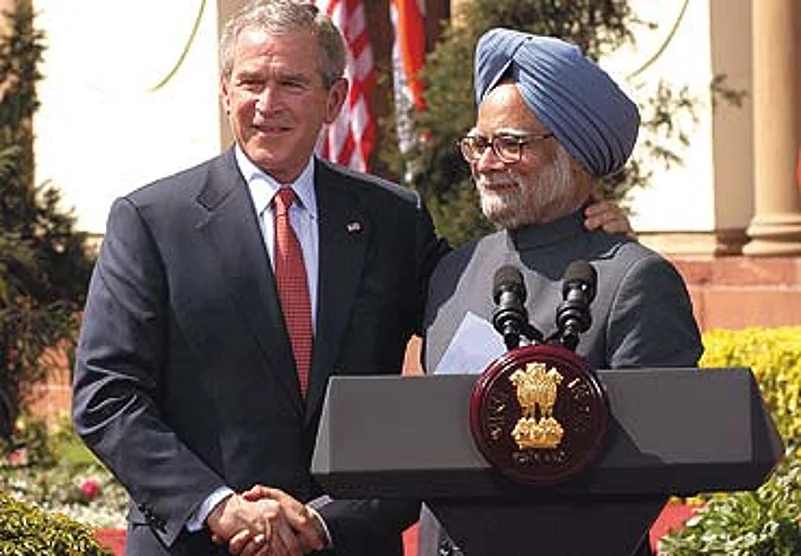
In Delhi, the UPA government, which had staked significant political capital on concluding the pact, is already facing questions from the Left and from scientists who want answers to every "What if...". The dark shadow of the Tarapur debacle, when the Americans reneged on their promise to supply nuclear fuel, is in living memory, an ache in the heart of eminent and proud Indians such as M.R. Srinivasan, former chairman of the Atomic Energy Commission and a current AEC member, who negotiated the Tarapur deal but soon found the ground missing from under his feet. "The negotiators had been told there can't be a repeat of Tarapur. The Americans also realised it," he said.
It was important to calm the scientists whose fears—valid or otherwise—could fuel out-of-limelight politicians into creating a haboob on television. No wonder that Anil Kakodkar, AEC chairman and watchdog of the scientific establishment in the negotiations, briefed Srinivasan first after landing at 1 am in Mumbai last Sunday. Srinivasan was satisfied, declaring the deal "a good overall package. It doesn't compromise India's strategic programme, it doesn't compromise our three-stage programme and our independent nuclear research". But some in the scientific community remain critical. Placid Rodrigues, former director of the Indira Gandhi Atomic Research Centre, while calling the deal "85 percent successful," pointed out that reprocessing technology remained out of bounds. "We could have bargained better," he said. But in deal-making, you always give some and take some.
















